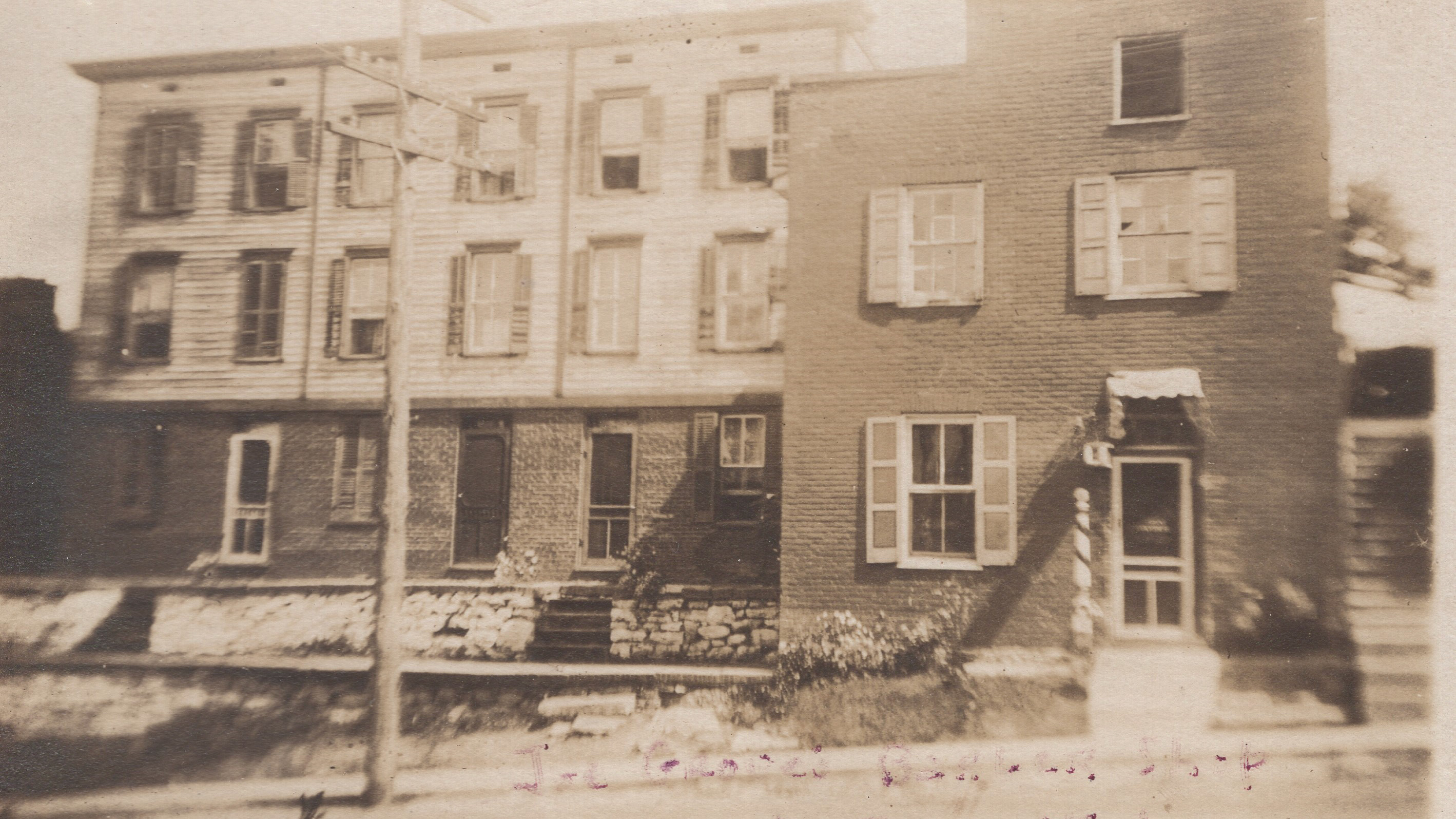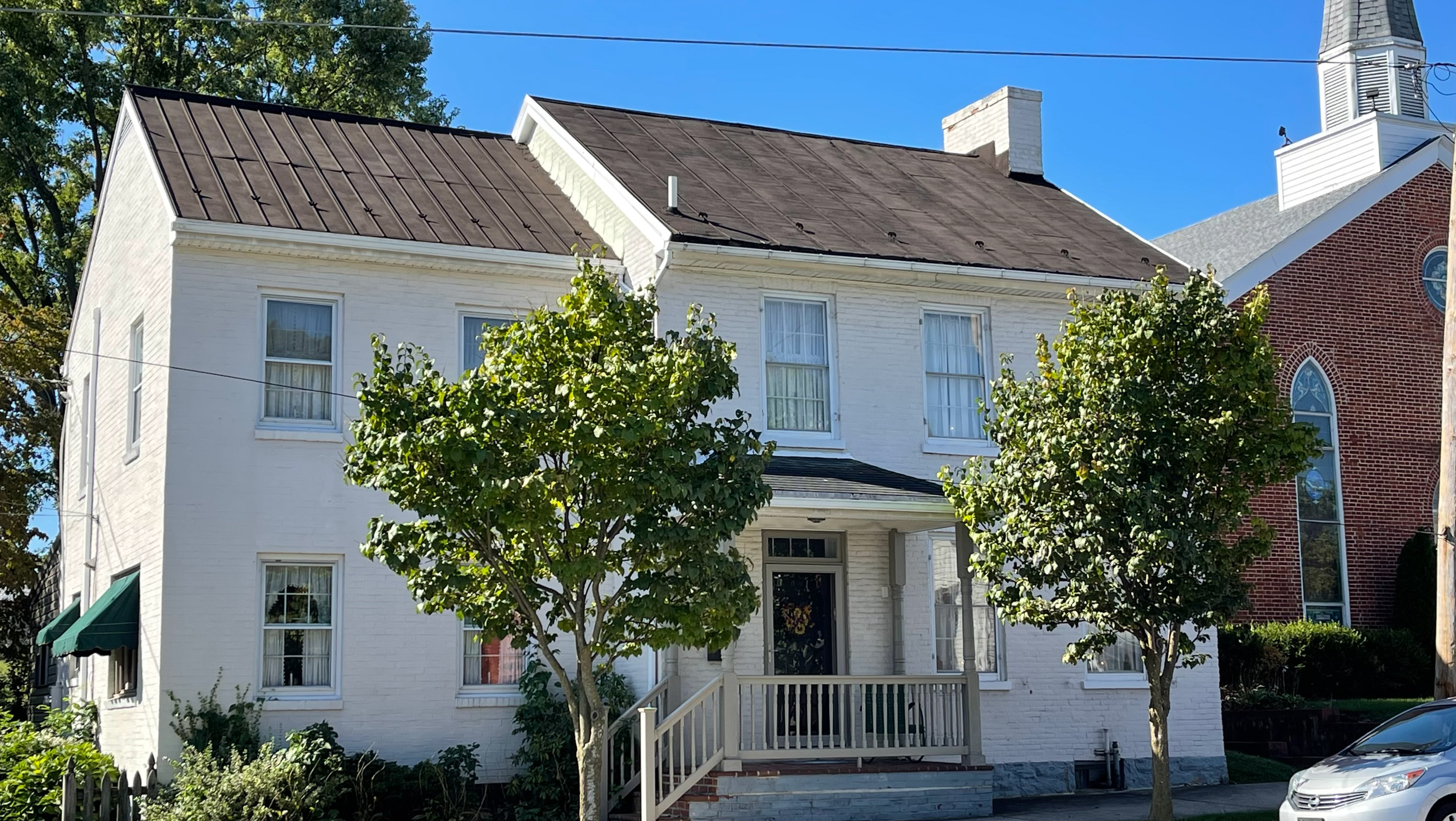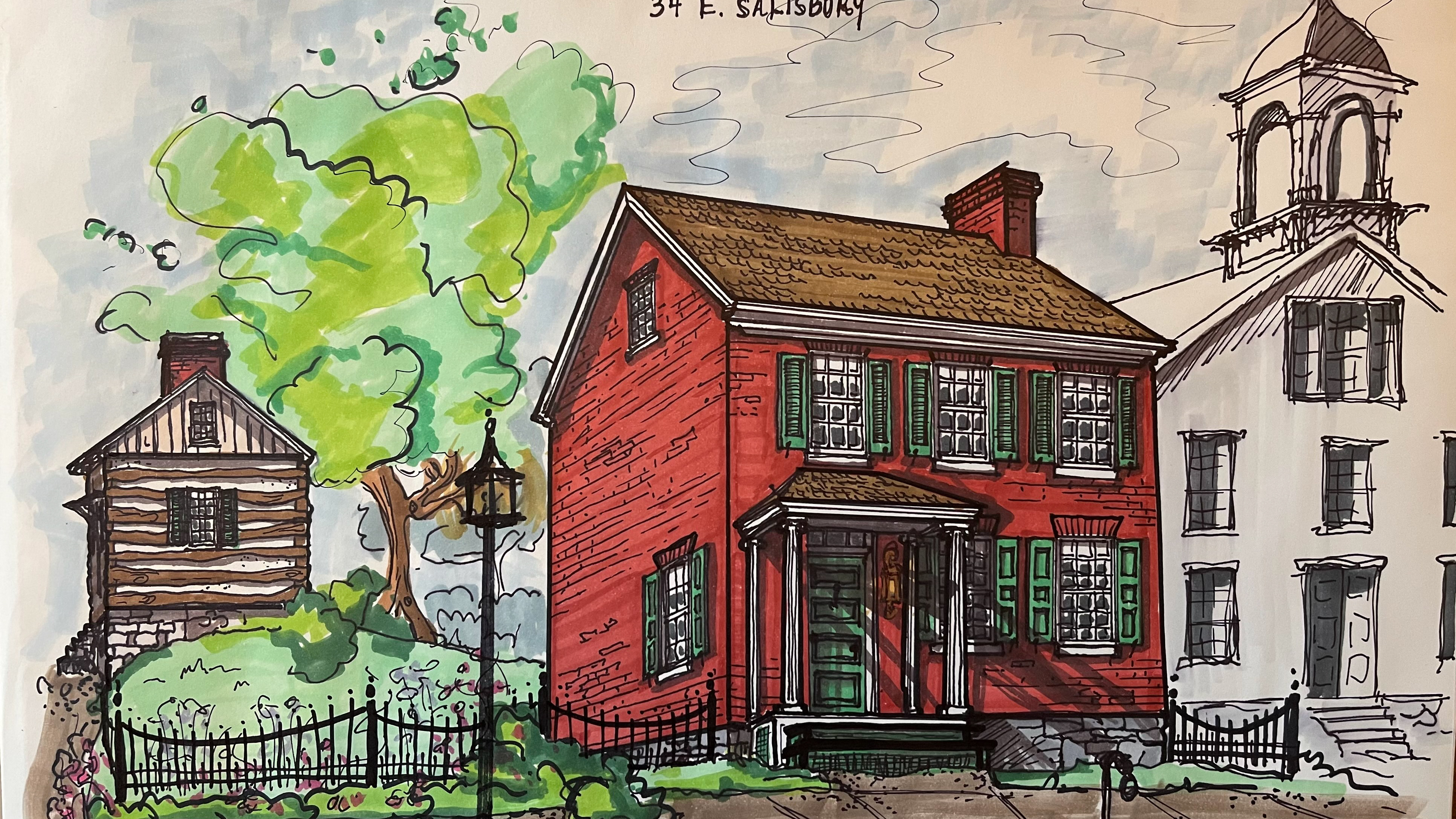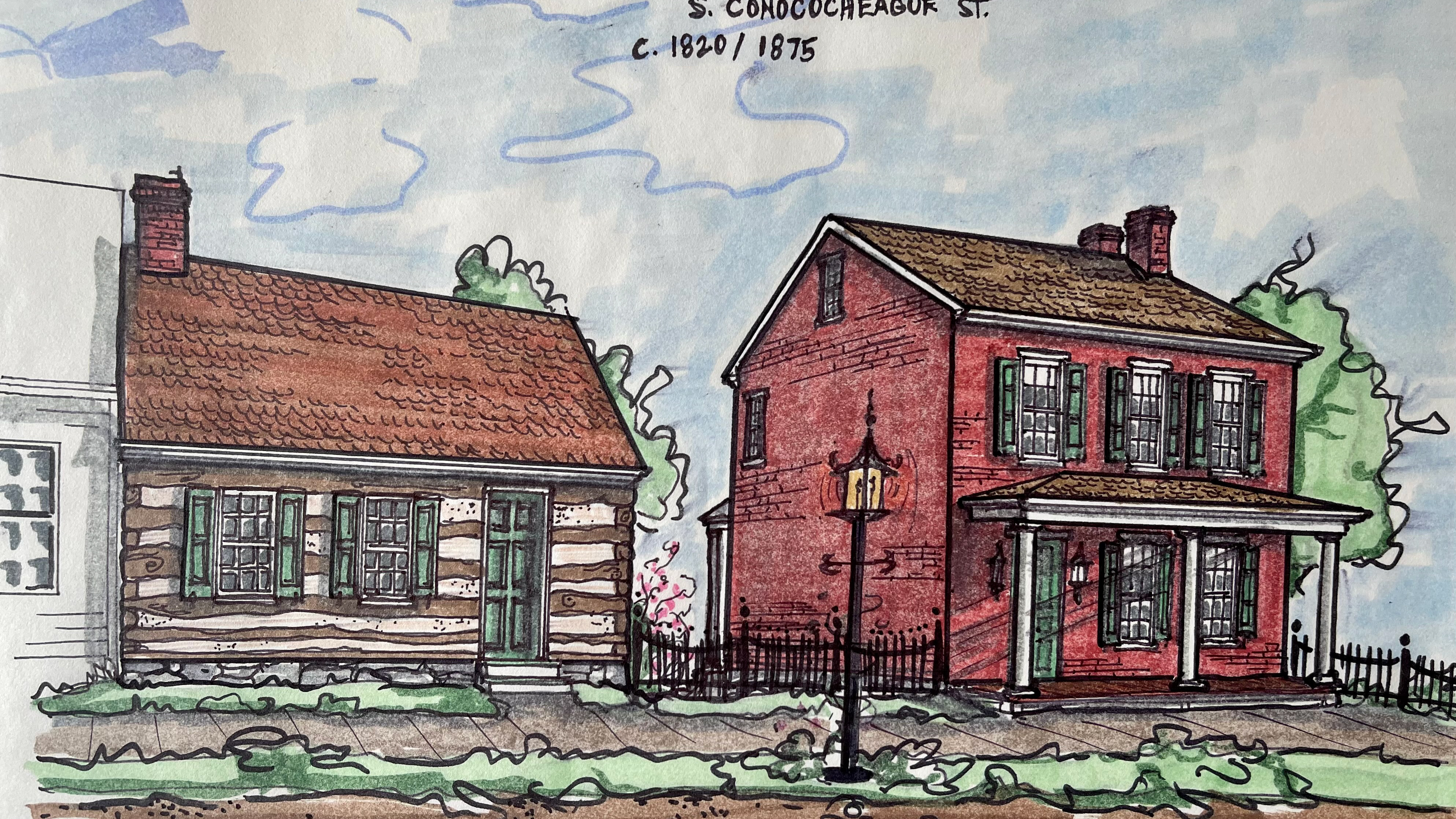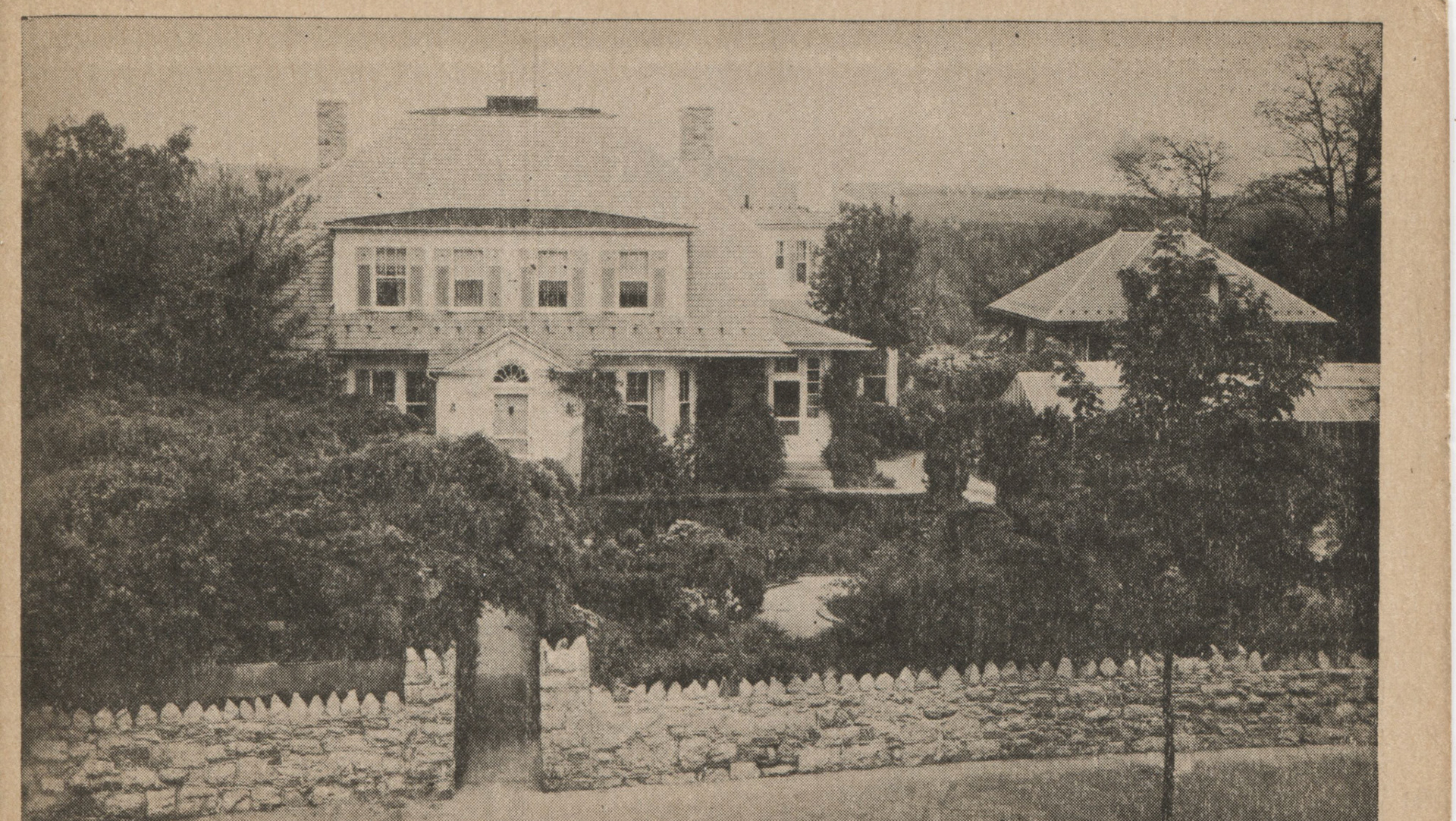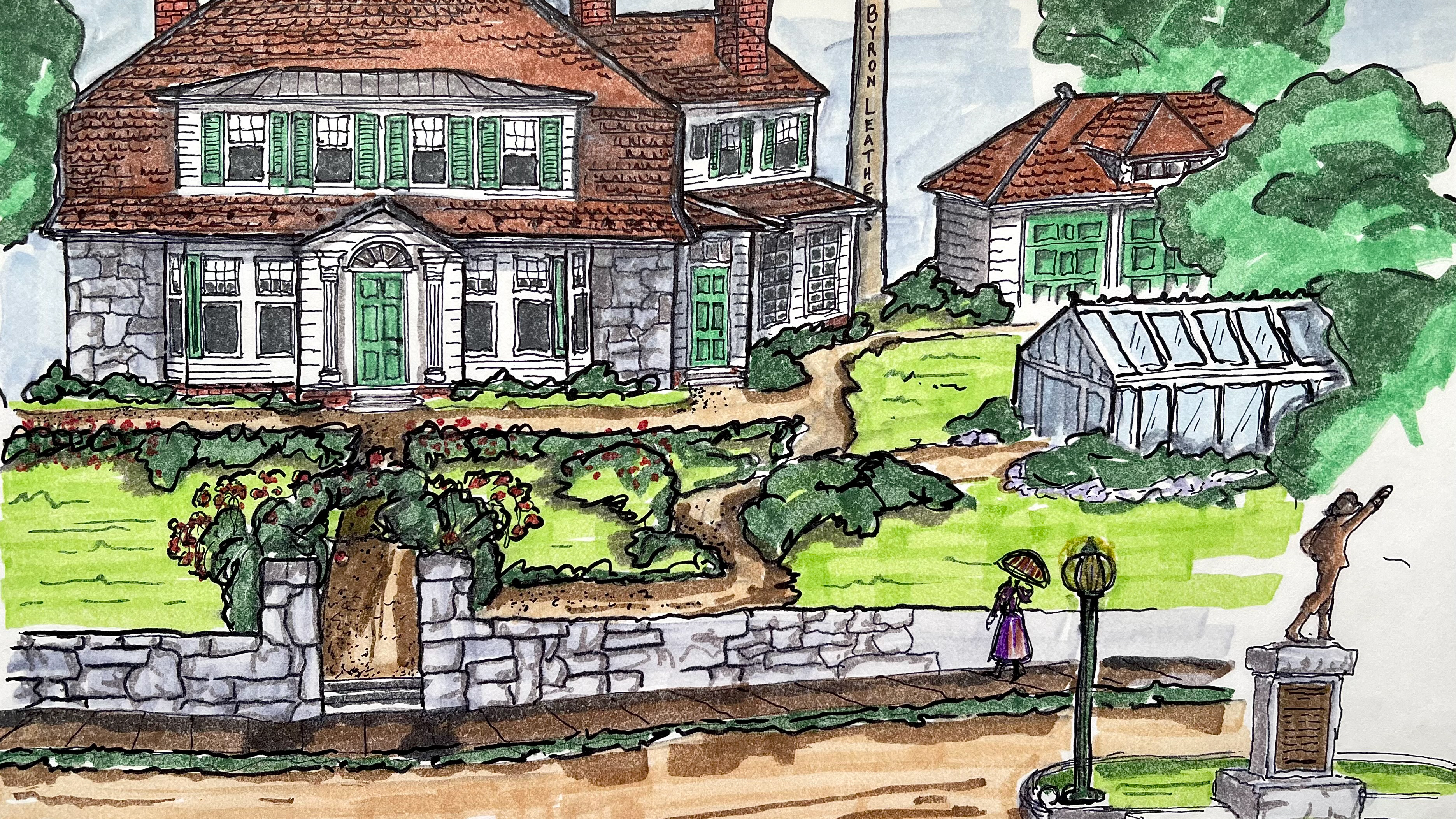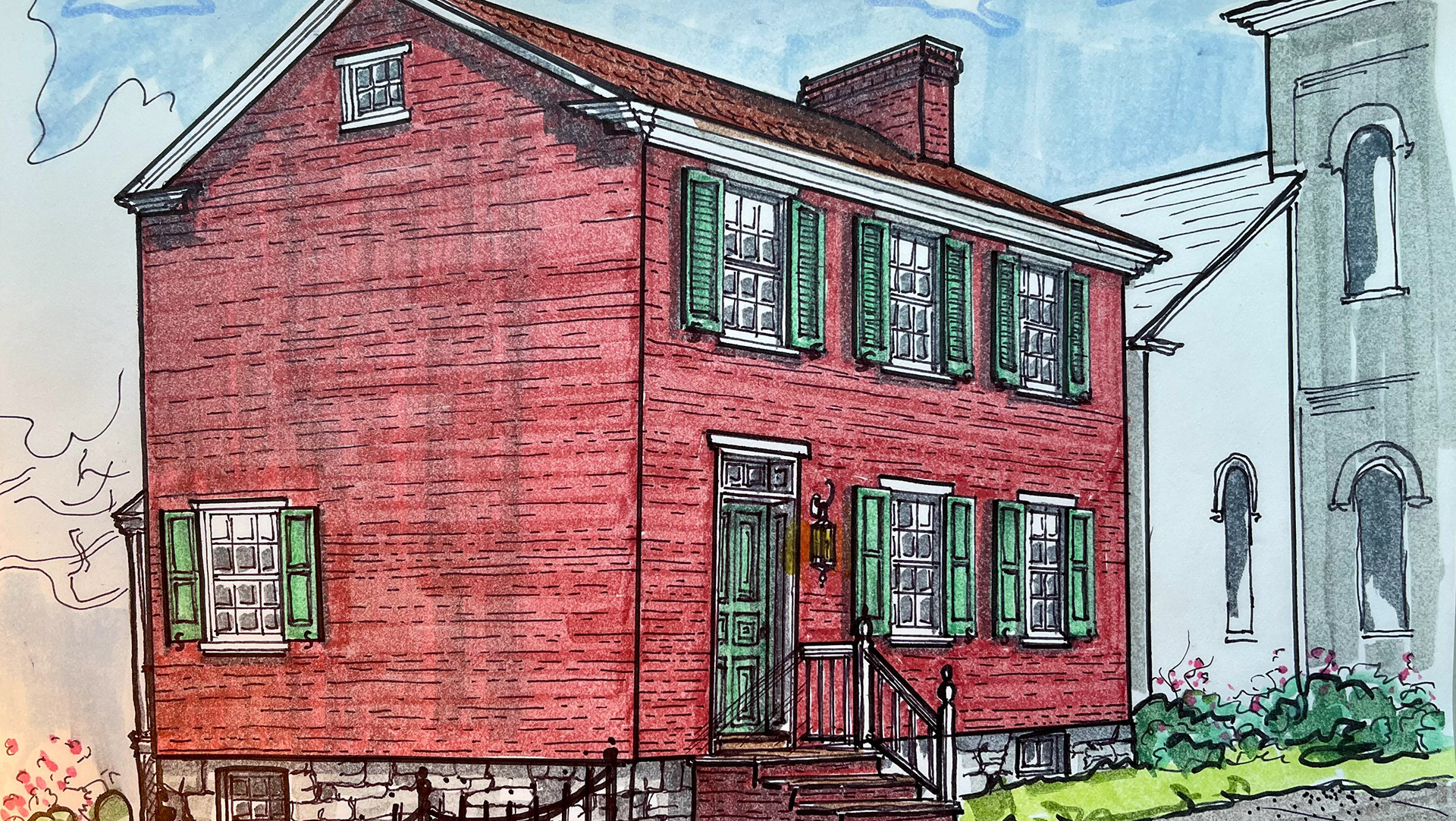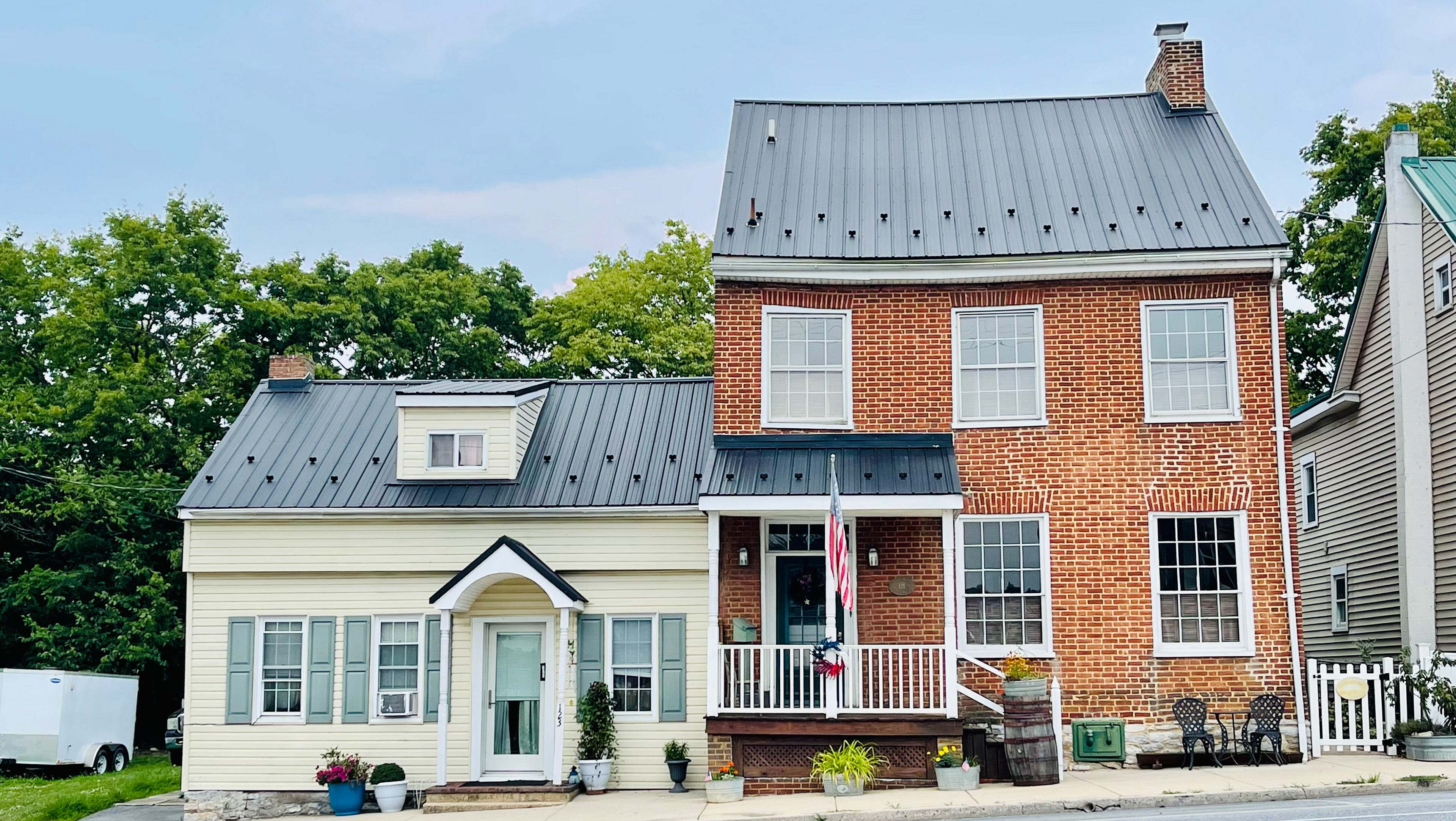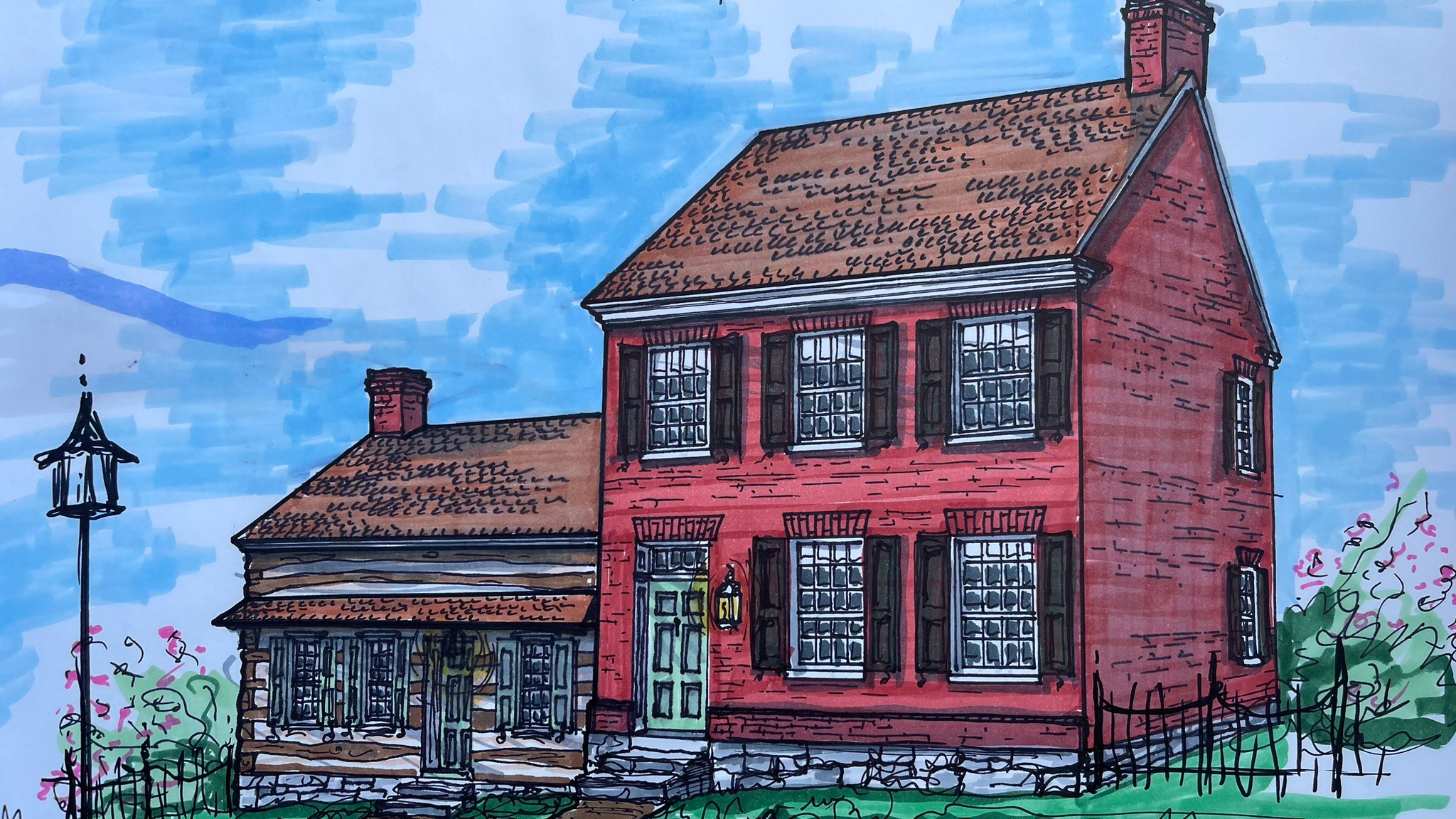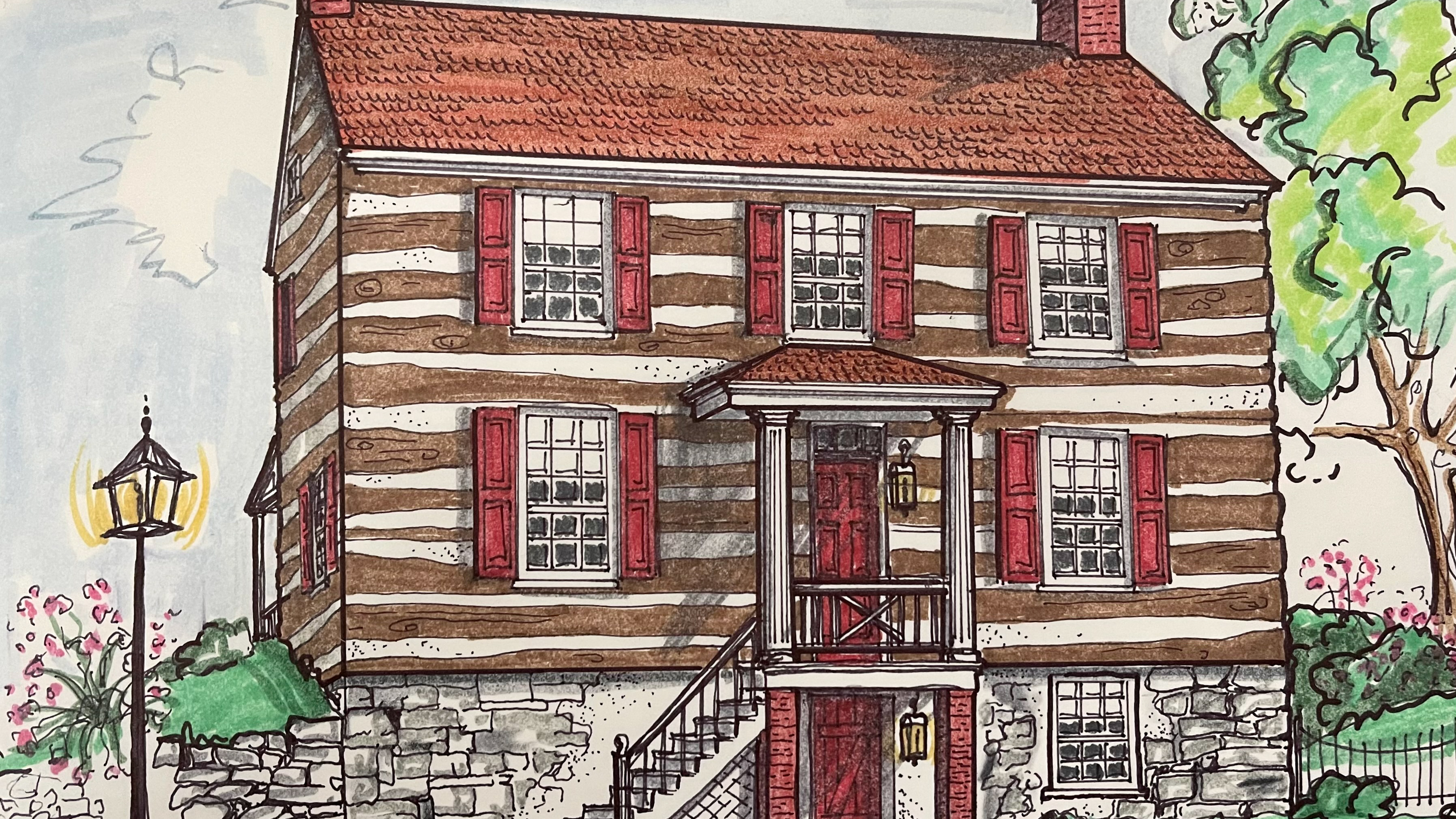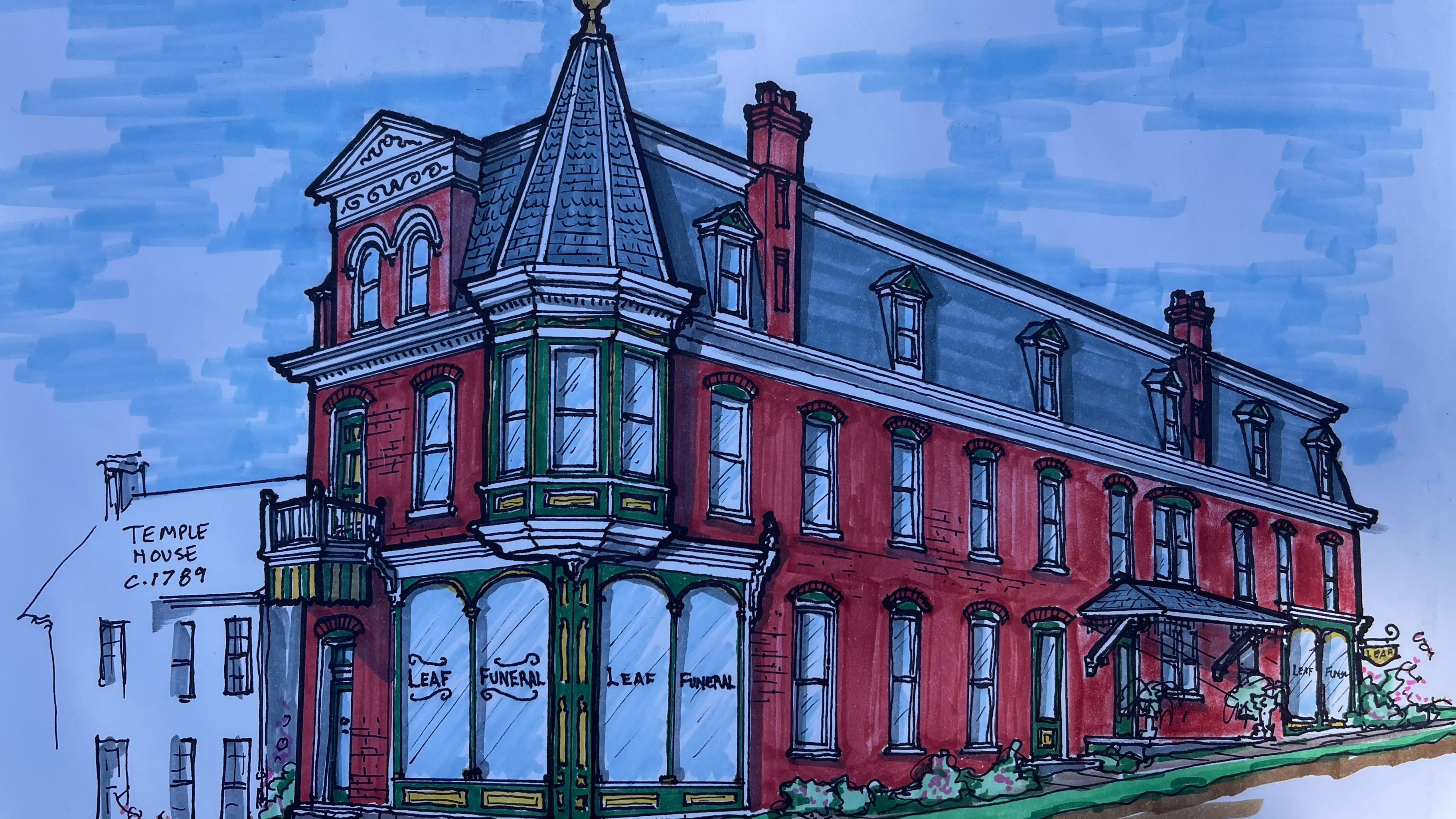Along the south side of East Potomac Street, just west of the Catholic Church is a narrow grassy yard with a flagpole. Until about 10 years ago one of Williamsport’s most architecturally interesting buildings sat there for over 200 years. The house that sat on this narrow lot was a brick and stone 2 bay wide, 7 bay long, and 3 stories high Federal “shotgun” house with a stepped brick gable or parapet. The residence was likely enhanced with the 2 upper brick levels by Cephas Bartleson about 1830 enlarging an earlier stone dwelling.
Cephas was a Freemason along with other prominent citizens of the town. The home had a gallery porch along the east side stretching the entire length of the building. The residence had at least 6 fireplaces and an open staircase with a simple railing that wound up all 3 floors. Architecturally this house was quite sophisticated for its time and place, displaying elements no other building in town had. It was one of a kind.
Cephas died a young man in 1835, and just a few months earlier Lot 29 and the house were acquired by Jacob T. Towson in June of 1835 for $1400, a very large sum for most lots in town, much less a half. It is probable that Towson used this building as a tenant house or for a family member as it directly abutted his own residence, the opulent Towson Mansion. Lot 29 had been divided into two parts, another house was on the east portion. Jacob Towson died in 1841 and his daughter Lydia Towson Irwin inherited the lot among others in the town. She sold the house and lot in fee simple to Mary/Maria/Mariah Oliver August 12, 1847 for $500. This sale price, while not small, does show benevolence on the part of the wealthy Mrs. Irwin to Mrs. Oliver.
Mary Oliver (nee Stake) was born here in Williamsport in 1814. Not a great deal is known about Mary in her younger years, but it is known that she marred Oliver Stearns Shattuck of Dunstable, Massachusetts in Hagerstown in 1839. Together they set out west in search of adventure, settling near Fort Smith, Arkansas. Mary and her husband ran a trading post on the frontier trading with the Native Americans. Mary and Oliver had 4 daughters, Fannie, Cecilia, Ellen and Kate. Sadly, Mary lost her husband not long after the birth of Kate so she picked up and left Arkansas with the proceeds of the sale of the Trading Post "sewn into her petticoats" (as written in her own hand in her journal). Mary removed her family back to Williamsport to be closer to her parents and brother. In 1860 the census shows her and the girls living at the house, and Mary’s occupation as a seamstress. The 1870 census shows Mary, now in her mid-50s still residing at the house with her married daughter Fannie Thompson, her husband Jessie, and their two children Nettie and Leo, younger daughter Ellen Oliver as well as a boarder, a Ms. Shook. Jessie Thompson was Williamsport’s mail courier and was supporting his family and Mother-in-Law by that time. Mary, after having raised her 4 daughters alone, running a business and being a dedicated grandmother passed away around 1876 about the age of 62. Fannie, her family and sister Ellen continued to live in the home until they both passed away. The home then passed to Leo Thompson and then finally George Thompson who sold it to the Catholic Church in 1951. The family of Mary Oliver lived in and owned the home for 104 years.
St. Augustine’s used the home for community outreach, educational purposes and even allowed the Boy and Girl Scouts to hold gatherings there for over 60 years. Unfortunately, the old home was no longer being used much and structural issues were beginning to appear. With a lack of funds and no prospective buyers, demolition was proposed. With no Historic Advisory Board/Commission to speak up and help find a solution, around 2015 the wrecking ball struck the over 200-year-old landmark, smashing it to kindling and rubble.
This home represented the fortitude and perseverance of one of Williamsport’s early enterprising women. Mary Oliver was ahead of her time, raising her 4 young daughters alone in a time where women had limited possibilities. The loss of this unique, historic landmark is sorely felt to this day by all who remember it. We must remember that these buildings are not just wood and stone, they represent the past lives and heritage of Williamsport. Williamsport is among the oldest towns in Western Maryland and its architectural heritage must be protected.

